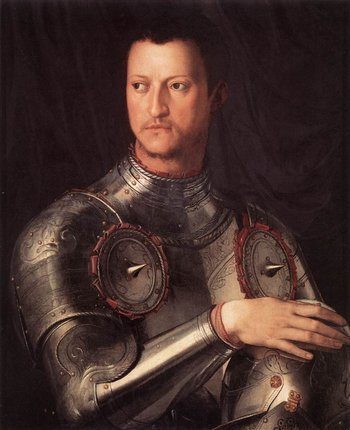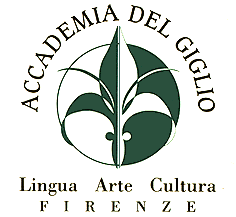 From 1537 to 1574, Cosimo I de’ Medici ruled Florence, restoring the Medicis’ power over the last decades of the Renaissance period. Since Cosimo belonged to a cadet branch of the Medicis’ family, he was not initially destined to become a grand duke, but when Alessandro de’ Medici was assassinated in 1537 Cosimo was then designed as his successor at the age of 17, supported by some important aristocrats of Florence, who were probably hoping to become the actual rulers of the city. However, although Cosimo was so young he soon showed his strong and ambitious character and his charismatic leadership.
From 1537 to 1574, Cosimo I de’ Medici ruled Florence, restoring the Medicis’ power over the last decades of the Renaissance period. Since Cosimo belonged to a cadet branch of the Medicis’ family, he was not initially destined to become a grand duke, but when Alessandro de’ Medici was assassinated in 1537 Cosimo was then designed as his successor at the age of 17, supported by some important aristocrats of Florence, who were probably hoping to become the actual rulers of the city. However, although Cosimo was so young he soon showed his strong and ambitious character and his charismatic leadership.
In June of 1537 the Holy Roman Emperor Charles V officially recognised Cosimo as grand duke of Tuscany, who could so secure the Medicis’ power over Tuscany for two centuries (until actually 1737, when last of the Medicis’ grand dukes died). Towards the end of July Cosimo fought his first war against Bernardo Salviati and Piero Strozzi, two exiled enemies of the Medicis, who had formed an army supported by the king of France and were marching into Tuscany in order to conquer Florence and defeat what they considered the weak successor of Alessandro. But Cosimo quickly sent his army to avoid the attack, and his captain, Alessandro Vitelli, under whom the troops came to engage the enemy, managed to win and capture the opponents. The enemy army leaders were beheaded in the Bargello, which used to be the prison and the premises of the Florentine government, nowadays a marvellous museum.
Afterwards Cosimo took revenge against Siena, which had helped the rebels army. So, supported by the Emperor, Cosimo laid siege to Siena for 15 months: when he finally entered into the city the population of Siena had been diminished from forty-thousand to eight-thousand inhabitants.
In 1559, he added Montalcino to his territories and formed the Grand Duchy of Tuscany. He was a despotic ruler, imposing heavy taxes owing to financial problems. However, Cosimo was also a very generous patron of the arts and many of the monuments and museums you can visit today in Florence were accomplished or created during his governement. He charged Vasari to design and build the Uffizi, originally intended to be the government residence, finally transformed into a great art gallery, which you can now visit with all the other Florentine museums in our Art History courses. Cosimo also chose the Pitti Palace as the new residence for his family and, behind the palace, he wanted the creation of the wonderful Boboli Garden (which you can also visit in our art History Course about the Italian Gardens and Tuscan Villas). Throughout his kingdom Cosimo sponsored many important artists such as Vasari, Cellini, Giambologna, who in 1598, after Cosimo’s death, made an amazing bronze equestrian statue of Cosimo, now placed in Piazza della Signoria. In 1539 Cosimo married Eleonora di Toledo (1519–1562), the daughter of Don Pedro Alvarez de Toledo, the Spanish viceroy of Naples. From Eleonora he had four daughters and seven sons, which strongly consolidated the Medicsi’ dynasty. The grand duchess was famed for being a devoted follower of the new Jesuit order. She had a private chapel in the Palazzo della Signoria, whose decoration was made by Bronzino, who also painted the magnificent Eleonora’s portrait that you can now admire at the Uffizi Gallery. Eleonora died with her sons, Giovanni and Garcia, in 1562, when she was only forty, struck down by malaria. The beautiful funeral dresses are now conserved at the Costume Gallery, as an example of 16th Century Italian Costume.
The Medicis dynasty: Cosimo IScrivi un commento |







Commenti recenti